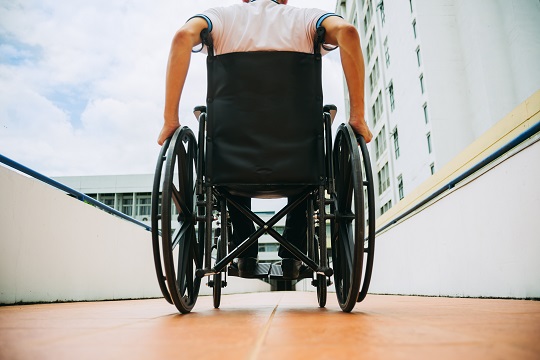
As businesses in the UK start planning for a very different workplace, employers are devising and delivering new business environments in offices, shops and factories, bars, clubs and restaurants.
Essential adjustments will be required to get the country back to work safely, but businesses also need to recognise the parallels with making reasonable adjustments to improve accessibility. The procedure is much the same, as is the ultimate aim – making routes and spaces safe for use by as many people as possible.
Making the workplace safe
There are some employers we’re aware of who have gone to great lengths to make the workspace safe, including a holiday home manufacturer which has now been able to resume production safely and an engineering training business which can now welcome back its apprentices. They have toured sites and scrutinised the layout and facilities every step of the way because they recognise that every business owner knows their own company better than anybody else, and official guidance can only become specific when it is applied properly.
Typically the approach to change will draw on input from all the departments within a business and the outcome may be finding a different way of working by adopting sensible, practical solutons that aren’t too technical or too costly – but which can become very expensive if they are overlooked and have to be applied later.
It should cover the journey through the premises and through the working day, anticipating all the touch points and interactions.
Businesses are re-designing walkways into a one-way system with two-metre markers and passing points for people and vehicles. There have been cases where staff toilet rooms only had one door so employers have formed new doorways to create a separate exit. There’s also new signage everywhere giving constant reminders about social distancing, the one-way system and washing hands.
Building Regulations
It’s important to remember that significant changes should only be made after taking specialist advice, particularly where Building Regulations may come into play. Building control permission in the form of a building warrant is likely to be required for substantial alterations and before anyone makes any changes they should check that they have the necessary approvals in place.
Businesses are also communicating with colleagues about the impact of any changes, and with third parties, learning from what neighbours, suppliers, customers and competitors are doing. It gets to the point where they look and learn everywhere they go, seeing examples of good practice whether they’re visiting another business or just doing the shopping.
All of this is being done to make the businesses more productive more quickly by enabling highly-valued staff to return to work and by putting the company in a position to welcome back customers and visitors.
The process must consider the requirements within this scenario of people who have an impairment, and in reviewing routes and facilities it makes sense to consider whether they provide good accessibility in normal circumstances.
If you’ve got a pinch point in a doorway or corridor there’s every chance it will present difficulties every day for someone who uses a wheelchair. Is there an alternative route? If so, is it accessible?
What is the impact likely to be on disabled staff or visitors if measures to maintain social distancing reduce the capacity of any lifts in your building?
If you’re forming new doorways in the walls of toilet areas does that present an opportunity to carry out other improvements maybe making sure the accessible WCs are up to standard?
If you’re shifting things around to widen the aisles in a shop it’s likely the new environment will be more accessible, so why not stick with that? But don’t jump to conclusions. If increasing the floor space means sticking another shelf of products on top of existing displays you may be creating a whole new problem.
And if you’re putting up new signage, make sure it’s designed and located with disabled people in mind.
Ian Streets is the managing director of About Access
Related competencies include: Health and safety, Inclusive environments
“It’s important to remember that significant changes should only be made after taking specialist advice, particularly where Building Regulations may come into play”
